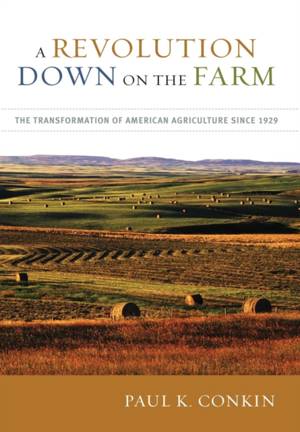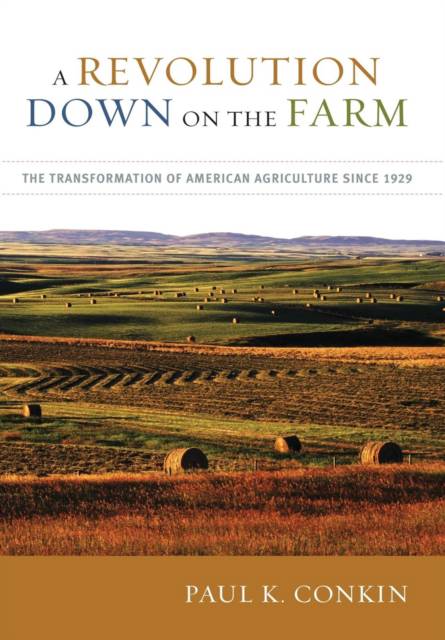
- Retrait gratuit dans votre magasin Club
- 7.000.000 titres dans notre catalogue
- Payer en toute sécurité
- Toujours un magasin près de chez vous
- Retrait gratuit dans votre magasin Club
- 7.000.000 titres dans notre catalogue
- Payer en toute sécurité
- Toujours un magasin près de chez vous
A Revolution Down on the Farm
The Transformation of American Agriculture Since 1929
Paul K ConkinDescription
Agriculture is the most fundamental of all human activities. Today, those who till the soil or tend livestock feed a world population of approximately 6.5 billion. Fifty years ago, the planet could not have sustained such a large population, and according to present projections, farmers will have to feed nine billion people by 2050. The greatest agricultural revolution in history has occurred in the last fifty years, with farmers in the United States leading the way. America's declining number of farms, however, comes as a surprise to many and may have dramatic implications. Paul K. Conkin's A Revolution Down on the Farm: The Transformation of American Agriculture since 1929 charts the profound changes in farming that have occurred during his lifetime. Conkin's personal experience growing up on a small Tennessee farm complements compelling statistical data from the U.S. Department of Agriculture. Using economic and historical analysis, Conkin assesses the skills, new technologies, and government policies that helped transform American farming. He clarifies the present status of a subsidized, large-scale, mechanized, and chemically supported agriculture, evaluates its environmental and human costs, and surveys alternatives to a troubled, widely challenged system.
Spécifications
Parties prenantes
- Auteur(s) :
- Editeur:
Contenu
- Nombre de pages :
- 240
- Langue:
- Anglais
Caractéristiques
- EAN:
- 9780813125190
- Date de parution :
- 01-09-08
- Format:
- Livre relié
- Format numérique:
- Genaaid
- Dimensions :
- 164 mm x 233 mm
- Poids :
- 503 g







